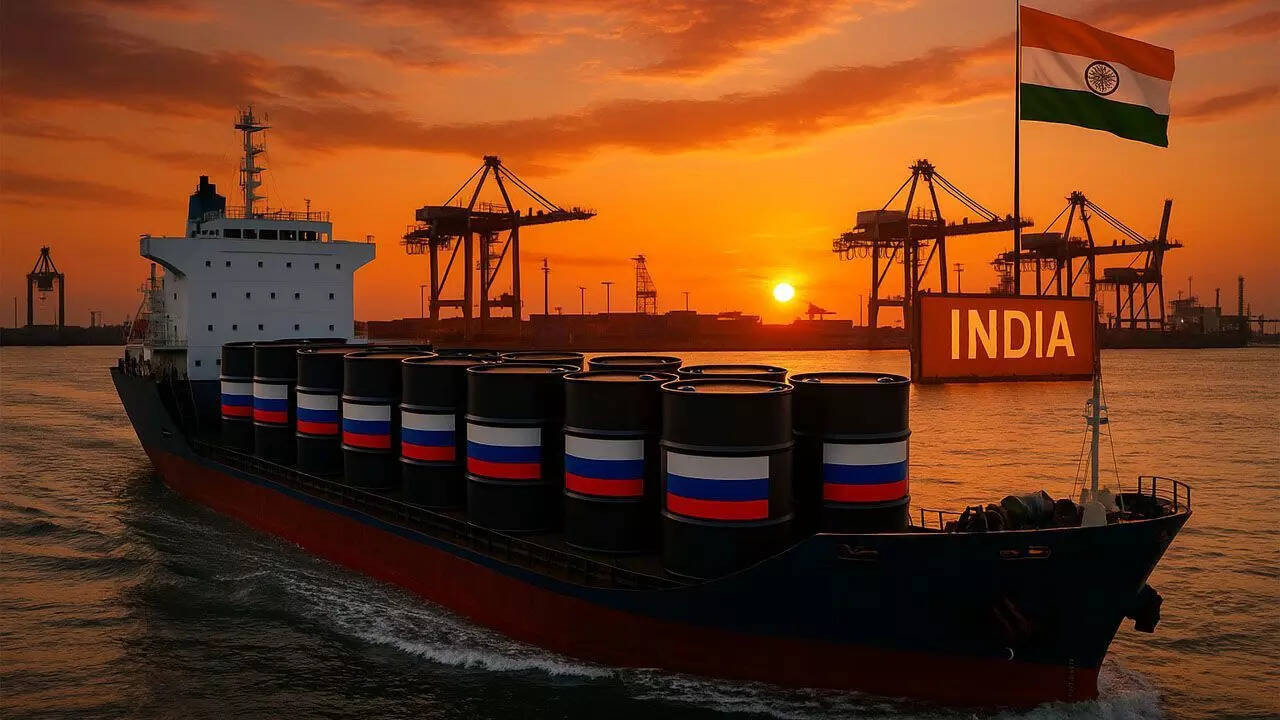A CLSA report indicates India’s savings from discounted Russian oil imports are around $2.5 billion annually, significantly less than media estimates. While India benefits from affordable energy, the discounts are offset by shipping costs and the need to blend with higher-quality oil. Halting Russian imports could spike global crude prices, highlighting India’s role in stabilizing the market.
The Real Story Behind Discounted Russian Oil: Separating Fact from Hype
The narrative surrounding India’s windfall from snapping up discounted Russian crude oil after the Ukraine conflict erupted has been persistent and, for some, irresistible. We’ve all heard the stories – tales of massive savings fueling economic growth and bolstering the nation’s energy security. But is the reality as grand as the headlines suggest? A recent analysis by CLSA, a leading financial services firm, suggests we might need to pump the brakes on the exuberance.
<img src="image-url-for-oil-rig.jpg" alt="Oil rig processing crude oil, crucial to understanding India's energy imports” width=”600″ height=”400″>
The Numbers Don’t Lie: A More Modest Gain
According to CLSA’s assessment, the actual financial benefit India reaped from importing cheaper Russian oil in the fiscal year 2022-23 was around $2.5 billion. While $2.5 billion is by no means pocket change, it falls far short of the more optimistic estimates circulating in the media and amongst certain analysts. These more bullish forecasts often painted a picture of India saving tens of billions of dollars, significantly boosting its trade balance.
This revised figure raises some important questions. Where did the higher estimates originate, and why the discrepancy? CLSA’s report highlights the importance of drilling down into the data, considering factors like shipping costs, insurance premiums, and the specific grades of crude oil imported. It’s not simply a matter of comparing the discounted price to the pre-war market rate.
Beyond the Discount: The Hidden Costs of Energy Imports
The lower-than-expected gains emphasize that the story of India’s Russian oil imports is far more nuanced than a simple tale of bargain hunting. While the discounts were undoubtedly attractive, other factors chipped away at the overall profitability.
For instance, insuring and transporting Russian oil became more complex and expensive due to Western sanctions and logistical challenges. The further the oil travels, the more those costs add up, eating into the initial savings. Additionally, the specific grades of Russian crude might not have been perfectly suited to India’s refining infrastructure, requiring adjustments and potentially impacting yields.
These hidden costs are often overlooked in simplified analyses, leading to inflated estimates of the financial benefits. CLSA’s report serves as a crucial reminder that international trade is a complex web of interconnected factors, and focusing solely on one variable, such as the purchase price, can paint a misleading picture.
The Strategic Implications of Russian Oil
Even if the financial gains were less dramatic than initially believed, the strategic implications of India’s increased reliance on Russian oil are significant. It allowed India to diversify its energy sources and maintain a relatively stable supply in a volatile global market. This is vital for a rapidly growing economy with ever-increasing energy demands.
However, this reliance also carries certain risks. Over-dependence on a single supplier, especially one subject to international sanctions, could make India vulnerable to price fluctuations and supply disruptions in the future. It also potentially complicates India’s relationships with other major oil-producing nations and Western powers.
Looking Ahead: A Sustainable Energy Strategy
The CLSA report provides a valuable reality check, urging us to move beyond simplistic narratives and focus on the complex dynamics shaping India’s energy landscape. The government’s commitment to renewable energy sources, outlined in various policy initiatives, remains crucial for long-term energy security and sustainability. Exploring domestic energy resources, coupled with strategic diversification of imports, is essential.
The narrative surrounding India’s energy imports from Russia highlights the importance of critical analysis and data-driven decision-making. While the discounts offered a short-term advantage, a more holistic and long-term energy strategy is paramount for India’s continued economic growth and global standing. Let’s continue the conversation by exploring the role of solar energy in India’s future: [link to a related article on solar energy in India].
A Measured Perspective
The saga of India’s Russian oil deal serves as a potent reminder: sensational headlines often obscure complex realities. While the discounted crude undoubtedly played a role in stabilizing energy supplies, the actual financial windfall appears to be more moderate than initially anticipated. By taking a measured perspective and considering all contributing factors, we gain a clearer understanding of the true impact and can make more informed decisions about India’s energy future.







